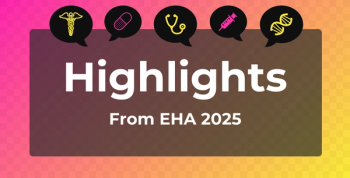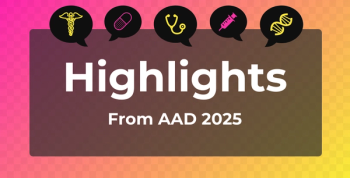
Significance of KEYNOTE-189 in NSCLC
Corey J. Langer, MD, FACP: KEYNOTE-189 was a game changer in nonsquamous non—small cell lung cancer. Up until that point, for this population, I generally treated individuals with pemetrexed and carboplatin, either alone or with bevacizumab, an angiogenesis inhibitor. In patients who weren’t candidates for pemetrexed, I would give paclitaxel and carboplatin with bevacizumab. In phase III trial data, this had proved a clear survival advantage compared with chemotherapy alone. It was my go-to regimen. Pemetrexed and bevacizumab were continued together as maintenance treatment.
All of that pretty much changed with the emergence, first, of the KEYNOTE-021g precursor trial. This randomized phase II trial ultimately led to a conditional approval for the pemetrexed/carboplatin/pembrolizumab triplet regimen, which has now been firmly entrenched based on KEYNOTE-189. KEYNOTE-189 was the follow-up randomized phase III trial. There was 2:1 randomization of that same combination versus standard pemetrexed and carboplatin. The triplet was given for 4 cycles with pemetrexed, which was continued as maintenance therapy indefinitely, and pembrolizumab continued for up to 2 years. Likewise, the control arm featured indefinite maintenance with pemetrexed. At the time of disease progression, patients on the control arm could cross over to single-agent pembrolizumab or to an immunotherapy agent of their choice.
The trial is remarkable. Despite the crossover, we’ve observed a significant improvement in overall survival with, really, the best hazard ratio I’ve seen in my career. The hazard ratio was under 0.5. The survival benefits were relatively more pronounced in the PD-L1 50% or higher group, but those survival advantages were also observed in the 1% to 49% group—in those patients without PD-L1 expression. The progression-free survival advantage was observed across the board. In the control group, the median progression-free survival was just under 5 months. It was approaching 9 months in the triplet arm. And again, as we’ve seen with overall survival, the survival advantage was magnified in those with higher levels of PD-L1 expression. We observed an overall response benefit—46%, 48% compared with about 18%. In those with a PD-L1 expression of 50% or higher, that response rate jumps up into the mid-60s.
Based on these data, the triplet has now become my standard regimen. Pemetrexed/carboplatin/pembrolizumab does result with a different constellation of immune-mediated toxicities, particularly including hypothyroidism, arthralgias, arthritis, rash, dermatitis, and sometimes pruritus in the absence of a significant rash. Colitis and nephritis are rare. We don’t see the toxicities that we typically associate with bevacizumab. It’s pretty unusual to see significant bleeding or clotting, and headaches and hypertension are not major features of this new combination.
As a result of the positive findings of KEYNOTE-189, the pemetrexed/carboplatin/pembrolizumab regimen has now been included in the NCCN guidelines. But the prior regimens have not been excluded. We still have the option of using pemetrexed and carboplatin either alone or potentially combined with bevacizumab. There are certain patients who are candidates for that regimen, who are not really appropriate for pembrolizumab—individuals with preexisting immune-related diseases or autoimmune disorders, folks with collagen and vascular disease, and patients who have undergone renal transplants or, for that matter, a liver transplant. I would far more readily give bevacizumab in combination with chemotherapy than I would consider an immune active agent that might lead to graft rejection. In addition, I have a slightly higher level of comfort for considering the bevacizumab-based regimens in individuals with a somewhat compromised performance status. The KEYNOTE-189 trial and virtually all the immunotherapy trials were confined to individuals with a performance status of 0 or 1.
Finally, the KEYNOTE-189 regimen explicitly excluded individuals with molecular aberrations. Individuals with the EGFR mutation or ALK translocation were not candidates for KEYNOTE-189. Likewise, they were not candidates for KEYNOTE-024, which showed a benefit for single-agent pembrolizumab versus chemotherapy in those with 50% or higher expression. The standard regimen in that population, when they become TKI refractory, does not include pembrolizumab. It would preferentially include bevacizumab with chemotherapy.
Newsletter
Stay ahead of policy, cost, and value—subscribe to AJMC for expert insights at the intersection of clinical care and health economics.







































